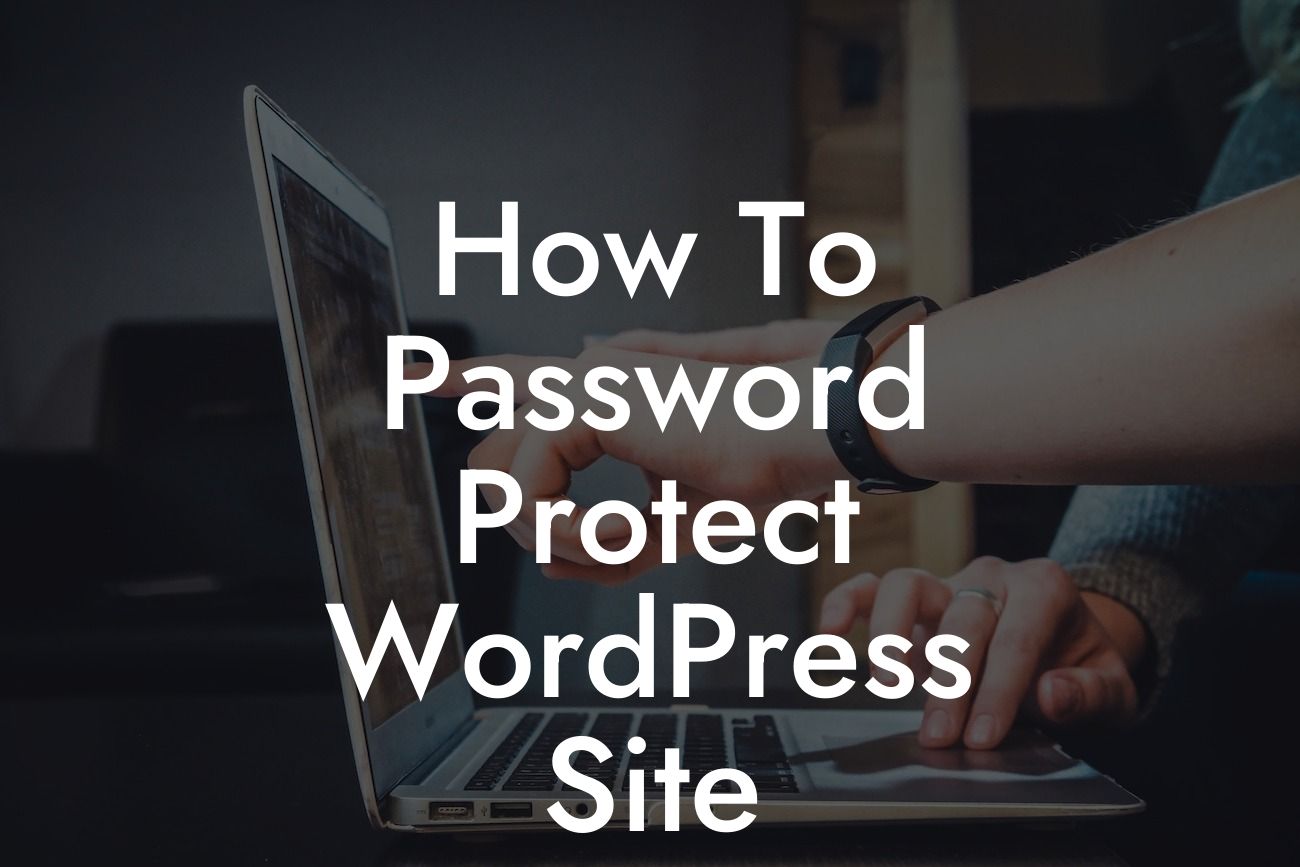In today's digital age, the importance of website security cannot be overstated. As a small business or entrepreneur, it's crucial to protect your sensitive content and keep your website secure from unauthorized access. One effective way to achieve this is by password protecting your WordPress site. In this comprehensive guide, we will walk you through the process of password protecting your WordPress site, covering various methods and plugins to ensure the utmost security for your valuable information.
Password protection provides an additional layer of security, requiring visitors to enter a password before accessing certain areas or pages of your website. Let's dive into the different ways you can password protect your WordPress site:
1. Built-in WordPress Password Protection:
WordPress offers a built-in feature to password protect individual pages or posts. Simply create a new page or post, click on the "Visibility" option, and select "Password protected." Set a strong password, save your changes, and only users with the password can access the content.
2. Plugin: Password Protected:
Looking For a Custom QuickBook Integration?
If you want to password protect multiple pages or posts at once, the "Password Protected" plugin is a useful tool. Install and activate the plugin, select the pages or posts you want to secure, set a password, and save your changes. Visitors will now need to enter the password to access the protected content.
3. Plugin: Private Content:
The "Private Content" plugin takes password protection to the next level by allowing you to create private areas on your website accessible to specific user groups. With this plugin, you can set up different user roles and customize their access levels to ensure the right content reaches the right audience.
4. Plugin: Membership & Subscriptions:
If you require a more advanced level of password protection, membership and subscription plugins like "MemberPress" or "Paid Memberships Pro" provide robust security features. These plugins allow you to create paid or free membership levels, giving you control over the content accessibility based on membership status.
How To Password Protect Wordpress Site Example:
Let's say you run an online course platform where users can access premium educational content. By password protecting your WordPress site using the "Private Content" plugin, you can create user groups for different course levels. For instance, only users who have purchased the advanced course package can access advanced course materials, while others are limited to basic or intermediate content.
Congratulations! You now have the knowledge and tools to effectively password protect your WordPress site. Remember, improving your website security is an ongoing process, and regularly updating your passwords is essential. Explore more guides on DamnWoo and take your online presence to new heights! Don't forget to try out our exceptional WordPress plugins, designed exclusively for small businesses and entrepreneurs, to supercharge your success. Share this article with others who could benefit from it and ensure their websites remain secure. Together, we can create extraordinary online experiences!













